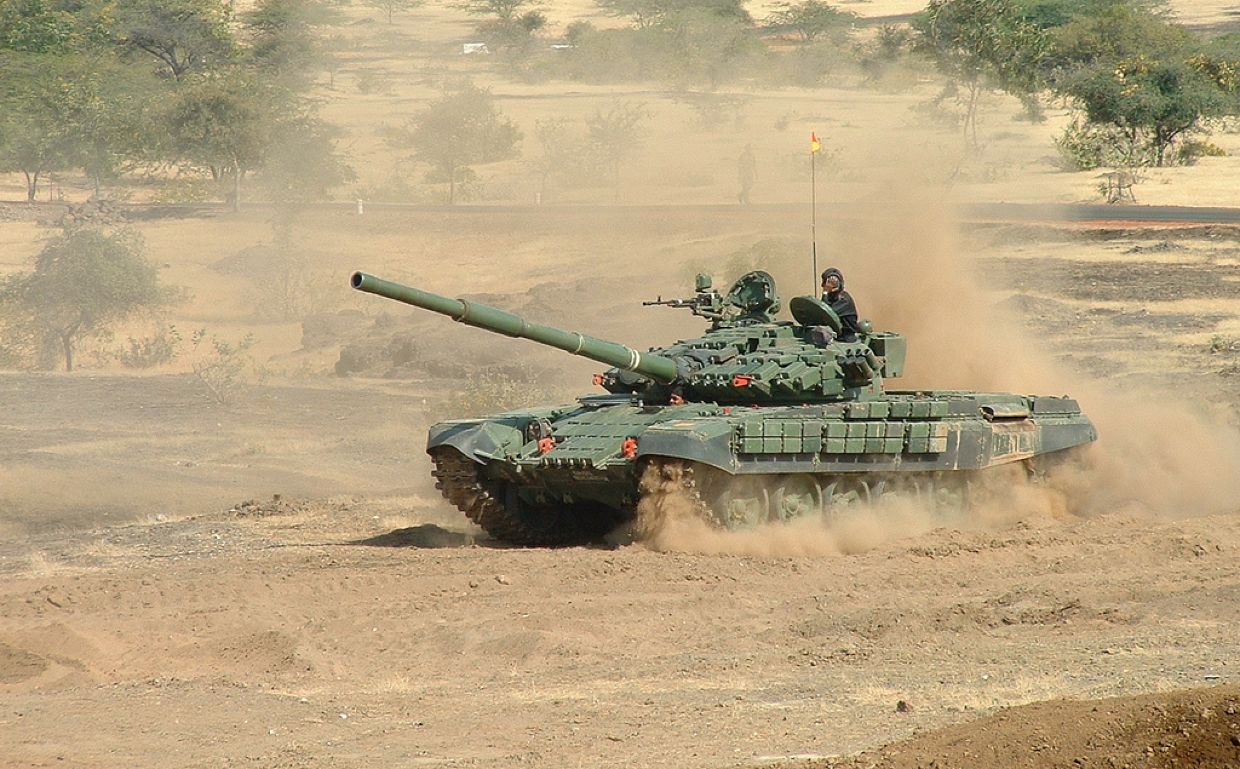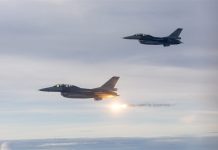The Indian Ministry of Defence (MoD) announced in a press release dated March 7, 2025, that it has signed a contract with Rosoboronexport (RoE) of the Russian Federation worth $248 million for the procurement of 1000 HP Engines for T-72 Tanks.
The engines are to be supplied in fully formed, completely knocked down, and semi-knocked down conditions. The press release didn’t give the total number of engines to be procured or a breakdown of the form in which they are to be delivered.
The Indian Army reportedly has a fleet of 2,400 T-72 tanks, 1000 of which are planned to be upgraded.
“The deal also includes Transfer of Technology (ToT) from M/s RoE to M/s Armoured Vehicles Nigam Limited (Heavy Vehicle Factory), Avadi, Chennai, for integration and subsequent licensed production of engines under ToT to boost the ‘Make in India’ initiative in Defence Sector.”
The T-72 tank, named Ajeya in the Indian Army, was introduced in India in the 1970s. It is currently fitted with a 780 HP Engine.
“Equipping the existing fleet of T-72 Tanks with 1000 HP Engine will enhance the battlefield mobility and offensive capability of the Indian Army,” the press release stated.
The press release didn’t specify the model of the new engine, but it’s likely that the engine being acquired is a variant of the V-92S2, a 1,000-hp engine developed by Russia that powers T-90S tanks and modernized T-72 variants.
This engine is known for its reliability and performance, making it a suitable choice for the T-72 upgrade program.

T-72 Upgrade Program
This announced engine procurement is part of a broader modernization program to upgrade approximately 1,000 T-72 tanks with new engines, fire control systems, and other modern systems under the ‘Buy & Make’ category.
Weighing just 41 tons, the T-72 is extremely lightweight. It was developed by the Soviet Union in the 1970s. The decision to keep it light was well thought out, keeping in mind the roads and bridges of Warsaw Pact countries. These would allow columns of T-72 tanks to travel safely but would not take the weight of NATO tanks in formation. The NATO tanks would be forced to pass one at a time, slowing their progress.
However, despite its lightweight, the T-72 is relatively underpowered, with a 780 hp engine. At 19 hp/ton, the T-72’s power-to-weight ratio compares unfavorably with the 21.5 hp/ton power-to-weight ratio of the heavier (46.5 tons) T-90 tank.
The T-72’s V-46-6 engine is a supercharged version of the basic 500 hp (370 kW) V12 diesel engine originally designed for the World War II-era T-34.
In September 2018, the Defence Acquisition Committee (DAC) accorded approval of necessity (AoN) for the procurement of 1000 engines of 1000 BHP for fitment in the Army’s T-72 tanks under the ‘Buy & Make’ category at an approximate cost of over Rs 2300 crore.
It was then intended that, after the transfer of technology, the Ordnance Factories Board (OFB) would manufacture most of these engines.
Prior to the AoN, in March 2016 Israeli firm Nimda offered to help upgrade the Indian Army’s Ajeya tanks. Under the upgrade program, Nimda had proposed that it would be able to boost the power output of the Ajeya’s engine from 780 hp output to 1,000 hp.
In addition, it would fit the engine with a fully automatic transmission, integral air filtration system, and a cooling system suited to extreme environments.
However, the Indian MoD opted for an indigenous approach to modernize these tanks. India had already acquired from Russia the licence to manufacture the V-46-6 (780 hp) engine for the Ajeya tank and the V92S2 (1,000 hp) engine for the Bhisma tank.
Without A Minesweeper For 6+ Years, Russia’s New MCM Drone Is Just What Indian Navy Needs! OPED
In July 2018, Defence Minister Nirmala Sitharaman handed over fully indigenous variants of the two engines to the Army.
However, the 1,000 hp indigenous V92S2 engine being license manufactured in India is likely customised for the T-90 tank. Adapting it for the T-72 would likely not be trivial.
Russian T-72 Upgrade Program
Meanwhile, the Russian Ministry of Defense (RuMoD) was pursuing its own T-72 upgrade program.
As part of the state defense order, work was carried out on upgrading the T-72B to the T-72B3 standard with a more powerful engine.
In December 2022, the RuMoD received a batch of modernized T-72B3M tanks equipped with a 1,000-hp boosted V-92S2 engine. The tanks feature automatic control of the power plant’s operating parameters and thermal regime.
India’s Likely Choice
India is likely to have opted for the 1,000-hp boosted V-92S2 engine developed for the Russian T-72B3M tanks.
The engine being acquired is different from the V-92S2 engine fitted on the Bhishma tanks of the Indian Army, which India already manufactures locally under license.
The liquid-cooled, multi-fuel (diesel, aviation kerosene, gasoline mixtures) V-92S2 engine for the Bhisma tank has a power output of 1,000 hp (736 kW) and 4,000 Nm torque. It features a single-stage turbocharger and planetary transmission.
The multi-fuel V-92S2F engine being acquired for the Ajeya upgrade has a power output of 1,130 hp (838 kW) and ~4,500 Nm torque. It features improved liquid cooling, an upgraded turbocharger, and improved automatic transmission.
Conclusion
The boosted V-92S2F engine provides greater horsepower, torque, and efficiency than the V-92S2, making it more suitable for upgraded T-72B3 tanks that need better mobility and acceleration.
However, the V-92S2 remains effective in T-90 tanks, which have a more modern chassis and drivetrain to compensate for the slightly lower power output.
T-90 tanks in India still use the standard 1,000 hp V-92S2 engine, but future upgrades could incorporate the higher-powered variant for better performance.
- Vijainder K Thakur is a retired IAF Jaguar pilot, author, software architect, entrepreneur, and military analyst.
- VIEWS PERSONAL OF THE AUTHOR
- Follow the author @vkthakur




